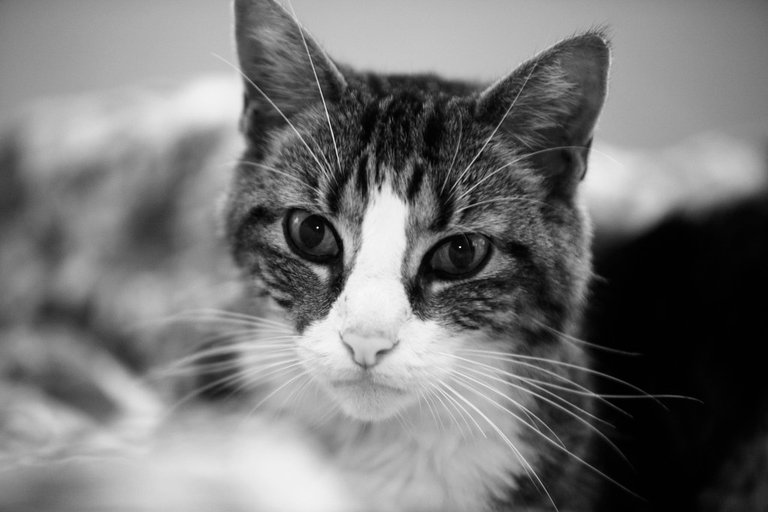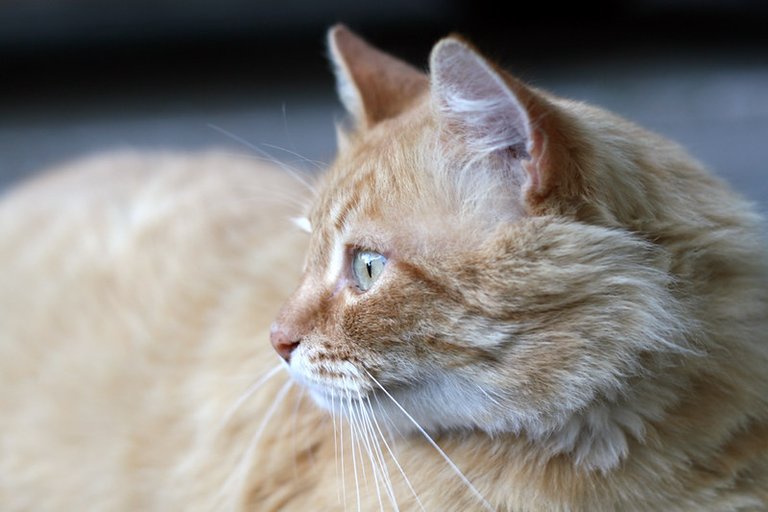One will literarily be amazed at how many health conditions our pets could be suffering from that may be causing a long line of pain and discomfort to them, but since they cannot speak, we may not be able to notice on time and probably not even imagine that such conditions could affect them, that is the more reason why the help of an expert needs to be sought when discomfort or change in attitude is noticed.

flickr.com
Hyperthyroidism occurs as a result of excessive thyroid hormones, thyroxine, and tridothyronine. This condition can affect both cats and dogs (our two most common household pets).
Let's analyze cats as a more suitable case study today, but before then how about we analyze the appearance of the thyroid gland briefly? The thyroid gland is divided into two lobes, one existing on either side of the windpipe on the neck of your cat. The thyroid gland produces thyroid hormone also known as thyroxine, meanwhile, this gland cannot be felt when a cat is normal.
The thyroid gland produces hormones that are highly beneficial for normal skeletal and growth of the brain in young animals. It consists of several functions such as; contribution to heart rate, involved in metabolism control, involved in the production of red blood cells, and also helps to control the breakdown of fatty tissue.

flickr.com
It was not until 1979 that hyperthyroidism was identified as a condition in cats, and now it is regarded as a common form of disease experienced by cats. It can be experienced by both male and female cats and has become more diagnosed in older cats.
It is a progressive disease that has a subtle and slow onset but with time becomes more obvious. It may be difficult to recognize portrayed signs on time as the high level of activity and increased appetite may not be considered abnormal, even the gradual coat deterioration may be considered as a normal aging sign.
Thyroid hormones actively control the speed of your cat's metabolism, but when it is in excess, it can create a series of signs. The more thyroid hormones that are produced, the higher the metabolic rate, and more calories that the cat can burn.

flickr.com
There are however noticed signs that can help us suspect the presence of thyroid hormones; weight loss, increased appetite and thirst, weakness, rapid heart rate, goiter, serious hyperactivity, nervousness, and difficulty breathing.
Amongst all, weight loss is often the most obvious, and this is due to increased metabolism despite an increased appetite. An affected cat would usually become cranky or aggressive.
Environmental factors like flame retardant, and other organic pollutants can subject some cats to hyperthyroidism, exposure to a high level of dietary iodine may also trigger the presence of hyperthyroidism in susceptible cats. Hypertension is developed as a result of pumping pressure and elevated heart rate.
Although several cats that have previously been diagnosed with hyperthyroid disease already have an underlying situation of kidney disease. When a case of hyperthyroidism is left untreated, it can also cause kidney disease as a result of the damaging effects of hypertension on the kidneys.
When treatment is carried out, it is often a very successful one, before treatment is carried out, several tests are often performed and this includes; urinalysis, additional blood tests, an ECG, chest X-rays, and blood pressure measurements. These tests are important to be carried out to evaluate the overall health condition of your cat and predict the possible likelihood of complications.
Oral medications, which may be lifelong administration of methimazole, can control the effects of an overactive thyroid gland. After the medications have been administered, side effects are in the form of fever, lethargy, liver damage, anemia, anorexia, vomiting, and a decline in white blood cells.
Feeding your cat with an iodine-limited diet can resolve existing clinical signs and reduce the concentration of thyroid hormone. The food intake is different from medications, through research, it has been discovered that, when the level of dietary iodine is controlled, the hyperthyroid cat's body would resume thyroid hormone production normally.
The surgical removal of the affected thyroid gland/glands is also an effective procedure. Since hyperthyroidism is more common amongst older pets, there is a level of risk involved. The risk is however minimal if the cat is healthy.
Radioactive iodine therapy is an effective way to treat hyperthyroidism. When there is an injection of radioactive iodine, it destroys the abnormal thyroid tissue without putting the organ in danger.
References.
vcahospitals.com/know-your-pet
msdvetmanual.com/endocrine-system/the-thyroid
Thanks for your contribution to the STEMsocial community. Feel free to join us on discord to get to know the rest of us!
Please consider delegating to the @stemsocial account (85% of the curation rewards are returned).
Thanks for including @stemsocial as a beneficiary, which gives you stronger support.